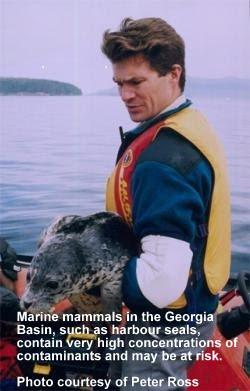 Federal, provincial, and municipal levels of government jointly manage chemical contaminants through legislation, codes, and bylaws, as well as through programs addressing the use, release and presence of chemical contaminants in the environment.
Federal, provincial, and municipal levels of government jointly manage chemical contaminants through legislation, codes, and bylaws, as well as through programs addressing the use, release and presence of chemical contaminants in the environment.
Federal Government Initiatives
While many federal laws help to protect Canadians and their environment from risks associated with chemical substances, the Canadian Environmental Protection Act, 1999 (CEPA 1999), is the main regulatory tool used to assess and manage chemicals in Canada. CEPA 1999 is jointly administered by Environment and Climate Change Canada and Health Canada. Since 1994, CEPA 1999 has required new chemicals to undergo scientific risk assessments prior to their import or manufacture in Canada in order to determine whether they pose a threat to human health or the environment. However, it was also recognized that many thousands of chemical substances were already in use in Canada at the time that this requirement became law. To address this issue, CEPA 1999 required the categorization of existing substances already in use in Canada (more than 23,000) to determine which of these existing substances posed a threat to human or environmental health in Canada. This categorization was completed in 2006 and was considered to be a first step in identifying chemicals requiring a more detailed risk assessment, additional research, or risk management strategies. Chemicals found to be toxic or potentially toxic through assessments are put forward for further action, including the development of risk management strategies. Risk management strategies, which are developed on a chemical specific basis, implement measures to eliminate or minimize human and environmental exposure to these substances by implementing controls on their use and/or release to the environment. Completed risk assessments and risk management strategies and additional information on the substances being assessed and managed under CEPA 1999 can be viewed on the Environment and Climate Change Canada website. For more information on the process of chemical management under CEPA, refer to the List of Toxic Substances in Schedule 1 of CEPA, Toxic Substances Management Policy, Toxic Substances Management Process, life cycle management, and virtual elimination.
In 2006, the Government of Canada (GOC) introduced the Chemicals Management Plan to manage and regulate chemicals which are harmful to human and ecosystem health. Regulations, guidelines and objectives protect human and environmental health by providing national controls on the presence of chemical substances in food, drugs, pesticides, and manufactured products; their concentrations in the environment; and their release to the environment in emissions and wastes. Chemical Management Plan progress reports are prepared regularly by Environment and Climate Change Canada and Health Canada. For more information on the Chemical Management Plan and Canada’s approach to managing chemicals, refer to the Government of Canada website.
A number of federal government departments conduct programs to obtain information on chemical contaminants in Canada and to minimize their threat to human and environmental health.
- Environment and Climate Change Canada conducts programs on a number of topics relating to chemical contaminants including: groundwater quality, air quality and emissions, fresh water quality, contaminant levels and effects in birds and other wildlife, shellfish contamination, pollution from wastewater, federal contaminated sites, Environmental Effects Monitoring Programs for metal mines and pulp and paper mills, and pollution prevention.
- Fisheries and Oceans Canada (DFO) supports programs relating to chemical contaminants in the environment through the National Contaminants Advisory Group. DFO also provides information on shellfish contamination and shellfish harvesting closures. In addition, DFO has primary responsibility for the regulation and management of aquaculture.
- Agriculture and Agri-Foods Canada addresses agri-environmental issues through programs relating to air quality, biodiversity, soil nutrients, and surface and groundwater quality.
- Health Canada environmental health programs address air quality, contaminated sites, environmental contaminants, and water quality issues. In addition, the Pest Management Regulatory Agency (PMRA), a branch of Health Canada, has the lead role in federal regulation of pesticides through the Pest Control Products Act.
Other Federal legislation used to manage chemical contaminants include:
- Fisheries Act provisions which addresses Fish and Fish Habitat Protection and Pollution Prevention and regulations under the Act including Fish Toxicant Regulations; Aquaculture Activities Regulations; Metal and Diamond Mining Effluent Regulations (which replace the Metal Mining Effluent Regulations (MMER); the Pulp and Paper Effluent Regulation (PPER); the Chlor-Alkali Mercury Liquid Regulations; the Petroleum Refinery Liquid Effluent Regulations; and others.
- Canadian Environmental Assessment Act, 2012 (CEAA 2012)
- Migratory Birds Convention Act, 1994
- Fertilizers Act, 1985
